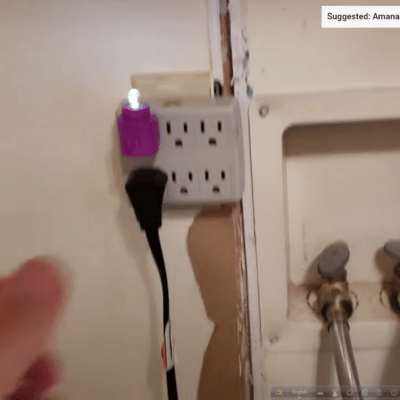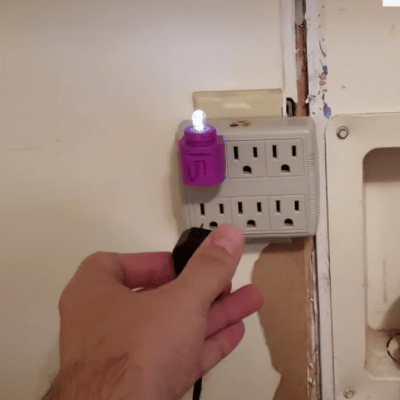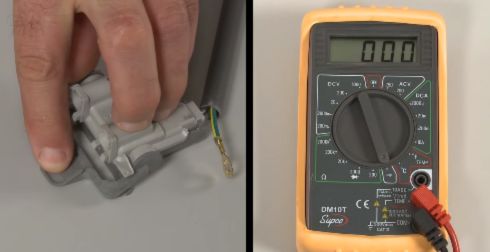Having a washing machine that won’t drain can be a frustrating experience. Laundry piles up, and the thought of potential repairs can be overwhelming. If you find yourself in a situation where your Amana washer won’t drain, don’t panic. In this comprehensive guide, we will explore common causes for this issue and provide you with practical troubleshooting steps to help you get your washer back in working order. From clogged drains to faulty parts, we’ll cover it all. So let’s dive in and tackle the problem of a non-draining Amana washer together.
Understanding the Importance of a Properly Functioning Washer Drain
The drain function of your Amana washer plays a crucial role in the overall washing process. Once the washing cycle is complete, the water needs to be efficiently drained from the tub to allow for the next steps in the laundry process. Without a functional drain, water can accumulate, leading to potential damage to your washer and a delay in your laundry routine. It’s important to address any drainage issues promptly to ensure the longevity of your machine and maintain its optimal performance.
Common Causes for a Non-Draining Amana Washer
Several factors can contribute to a situation where your Amana washer won’t drain. Understanding these common causes can help you diagnose the issue more effectively. Here are a few possible culprits:
- Clogged drain hose: Over time, lint, debris, or foreign objects can block the drain hose, preventing water from flowing out properly.
- Faulty drain pump: The drain pump is responsible for removing water from the washer. If it becomes faulty or malfunctions, the water may not drain as expected.
- Malfunctioning lid switch: The lid switch acts as a safety mechanism to prevent the washer from spinning or draining when the lid is open. If the switch is faulty, it may disrupt the drainage process.
- Issues with the washer’s control board: Problems with the control board can interfere with the draining cycle of the washer, resulting in drainage issues.
- Clogged washer filter: The washer filter traps debris and lint to prevent them from entering the drain pump. A clogged filter can hinder proper drainage.
- Broken drain belt: In some cases, a broken or worn-out drain belt can cause the washer not to drain effectively.
Now that we have a better understanding of the potential causes, let’s explore troubleshooting steps to address the issue.
Related: How to Reset Amana Washing Machine
Troubleshooting Steps: My Amana Washer Won’t Drain
Check for a clogged drain hose.
One of the first troubleshooting steps to consider is checking for a clogged drain hose. Follow these steps:


- Turn off the washer and unplug it from the power source.
- Locate the drain hose at the back of the machine. It is usually connected to a drain pipe or a laundry sink.
- Disconnect the drain hose from the drain pipe or sink.
- Inspect the drain hose for any blockages. Use a flashlight to identify debris or foreign objects that may be causing the clog.
- If you find a blockage, remove it carefully using a plumbing snake, wire hanger, or by running water through the hose.
- Reconnect the drain hose securely.
- Plug in the washer and run a test cycle to check if the drainage issue is resolved.
Inspect the Drain Pump
The drain pump is responsible for removing water from the washer. If it is faulty or clogged, the water won’t drain properly. Follow these steps to inspect the drain pump:
- Turn off the washer and unplug it from the power source.
- Locate the drain pump, usually at the bottom of the machine.
- Remove any clothing or debris that may be blocking the pump.
- Check the pump impeller for any obstructions. Gently rotate it to ensure it moves freely.
- If the pump appears damaged or is not functioning correctly, it may need to be replaced. Consult a professional technician for assistance.
Examine the Lid Switch

The lid switch is a safety feature that prevents the washer from spinning or draining when the lid is open. If the lid switch malfunctions, it can interfere with the draining process. Follow these steps to examine the lid switch:
- Turn off the washer and unplug it from the power source.
- Locate the lid switch, usually located near the lid hinge.
- Open and close the lid while listening for a clicking sound. If you don’t hear a click, the switch may be faulty and need replacement.
- Consult a professional technician for further diagnosis and repair.
Verify the Washer’s Control Board
Issues with the washer’s control board can disrupt the draining cycle. Follow these steps to verify the control board:
- Turn off the washer and unplug it from the power source.
- Remove the control panel to access the control board. Refer to the user manual or manufacturer’s instructions for guidance.
- Inspect the control board for any visible signs of damage, such as burnt components or loose connections.
- If you notice any issues, it is recommended to seek professional assistance for repairs or replacement.
Clean the Washer Filter
The washer filter prevents debris from entering the drain pump. Over time, it can become clogged, affecting the draining process. Follow these steps to clean the washer filter:
- Turn off the washer and unplug it from the power source.
- Locate the washer filter, usually found behind a panel at the front or bottom of the machine.
- Place a towel or bucket beneath the filter to catch any water that may spill out.
- Open the filter cover and carefully remove the filter.
- Rinse the filter under running water to remove any debris or lint.
- Once cleaned, reinstall the filter securely.
- Plug in the washer and run a test cycle to check if the drainage issue is resolved.
Inspect the Drain Belt
If your washer has a belt-driven drain system, a broken or worn-out drain belt can cause drainage problems. Follow these steps to inspect the drain belt:
- Turn off the washer and unplug it from the power source.
- Locate the drain belt, usually at the back of the machine.
- Inspect the belt for any signs of damage, such as cracks, fraying, or excessive wear.
- If the belt appears damaged, it may need to be replaced. Consult a professional technician for assistance.
Frequently Asked Questions (FAQs)
Q: Why is my Amana washer not draining?
There can be several reasons why your Amana washer is not draining. Some common causes include a clogged drain hose, a faulty drain pump, a malfunctioning lid switch, issues with the control board, a clogged washer filter, or a broken drain belt.
Q: How can I unclog the drain hose of my Amana washer?
To unclog the drain hose of your Amana washer, follow these steps:
- Turn off the washer and unplug it from the power source.
- Disconnect the drain hose from the drain pipe or sink.
- Inspect the hose for any blockages and remove them using a plumbing snake, wire hanger, or by running water through the hose.
- Reconnect the drain hose securely.
Q: What should I do if the drain pump is faulty?
If the drain pump of your Amana washer is faulty, it may need to be replaced. It is recommended to consult a professional technician for diagnosis and repair.
Q: Can a malfunctioning lid switch cause drainage issues?
Yes, a malfunctioning lid switch can cause drainage issues. The lid switch acts as a safety mechanism to prevent the washer from spinning or draining when the lid is open. If the switch is faulty, it may disrupt the draining process.
Q: How do I clean the washer filter?
To clean the washer filter, follow these steps:
- Turn off the washer and unplug it from the power source.
- Locate the washer filter behind a panel at the front or bottom of the machine.
- Open the filter cover and carefully remove the filter.
- Rinse the filter under running water to remove any debris or lint.
- Reinstall the filter securely.
Q: What could be the reason behind a broken drain belt?
A broken drain belt in your Amana washer can be caused by wear and tear over time. Continuous use and aging can lead to belt deterioration and eventual breakage.
Can a Faulty Lid Lock Cause My Amana Washer to Not Drain Properly?
Can a faulty lid lock cause my Amana washer to not drain properly? Yes, it can. If the lid lock mechanism is not functioning correctly, it may prevent the washer from entering the drain cycle. However, before attempting any bypassing amana washer lid lock procedure, it is important to consult the manufacturer’s instructions or seek professional assistance to ensure safety and proper operation of the appliance.
Conclusion
Dealing with a non-draining Amana washer can be frustrating, but with proper troubleshooting, you can resolve the issue and get back to your laundry routine. By following the steps outlined in this guide, you can identify the cause of the drainage problem and take


1 thought on “My Amana Washer Won’t Drain: Troubleshooting and Solutions”